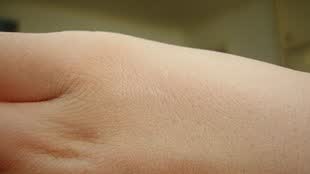A staggering 20 billion or so memory T cells are part of the immune cell repertoire of human skin, defending the host from a multitude of infectious agents. And now, those skin memory T cells have been analyzed and categorized in a paper published today (March 18) in Science Translational Medicine.
This paper is “a critical and groundbreaking redefinition of the cutaneous immune system,” dermatologist James Krueger of Rockefeller University in New York City, who was not involved in the work, wrote in an e-mail to The Scientist.
Memory T cells are part of the adaptive immune system, and “historically, we’ve learned about adaptive [T cell] responses by studying these cells in the organs of the immune system itself, such as the lymph nodes,” said immunologist David Masopust of the University of Minnesota. That’s because it was long presumed that although T cells visited the body’s peripheral tissues, they ultimately circulated back to the lymph nodes, he explained. But recent evidence has revealed that some T cells reside in the peripheral tissues forever. “They come in when you’re sick, when you have an infection,” Masopust said, “but then they essentially adapt to that tissue environment and make their living there.”
Indeed, Rachael Clark of Brigham and Women’s Hospital in Boston and her colleagues had previously discovered a population of memory T cells that never leave the skin—so-called resident cells. Now she and her colleagues have investigated these cells more closely, and found two distinct types. Furthermore, Clark’s team has found that the skin also has two types of memory T cells that come and go—so-called re-circulating cells. And each of these four memory cell types has its own specific characteristics.
Memory T cells develop from naive cells after exposure to pathogens. Because newborn babies have had little chance to experience pathogens, their skin is like a clean slate with almost no memory T cells at all. Thus, to study the infiltration and development of new memory T cells, Clark’s team engrafted human newborn foreskin—collected from circumcisions—into mice that lacked a functional immune system. The researchers then gave the animals an intravenous injection of donor adult human blood. The donor immune cells infiltrated the skin graft and, because it was foreign, mounted an adaptive immune response—exhibited as dermatitis—during which memory T cells were formed.
To study the resident memory cells, the team then treated the mice with a drug called alemtuzumab, which specifically depletes re-circulating but not resident memory T cells. The remaining resident cells were found to divvy up into two types based on the expression of a cell surface marker called CD103. Memory cells that expressed CD103 preferentially resided in the outer layer of the skin (epidermis), produced large amounts of cytokines, and proliferated minimally. CD103-lacking cells on the other hand preferentially resided in the basal layer of skin (dermis), had reduced but still robust cytokine production, and proliferated more.
The team went on to show that these same resident memory T cells were also present in healthy human skin and that of cutaneous lymphoma patients treated with alemtuzumab.
In addition to the resident cells, Clark’s team found that human skin contains two types of re-circulating memory T cells—differentiated by their expression of another surface marker, and by the speed at which they re-circulated. Both types of re-circulating memory cells had reduced cytokine production compared with their resident counterparts. Together, the results suggest that “the immune system protects skin by providing both very powerful soldiers that locally guard against infection, and highly mobile messengers that can move from one place to another and respond to infections in different sites in the skin and other tissues,” said Clark.
Understanding what controls the development of these specific memory T cells and further characterizing their functions may offer the potential for tailoring treatments to particular immunological diseases, said Clark. For example, psoriasis, mycosis fungoides (a T cell lymphoma of the skin), and fixed drug eruption (a skin rash caused by drug exposure), “have all been shown to be caused by resident memory cells,” she said. “Once we understand the biology of these cells better, we might be able to selectively deplete them.”







